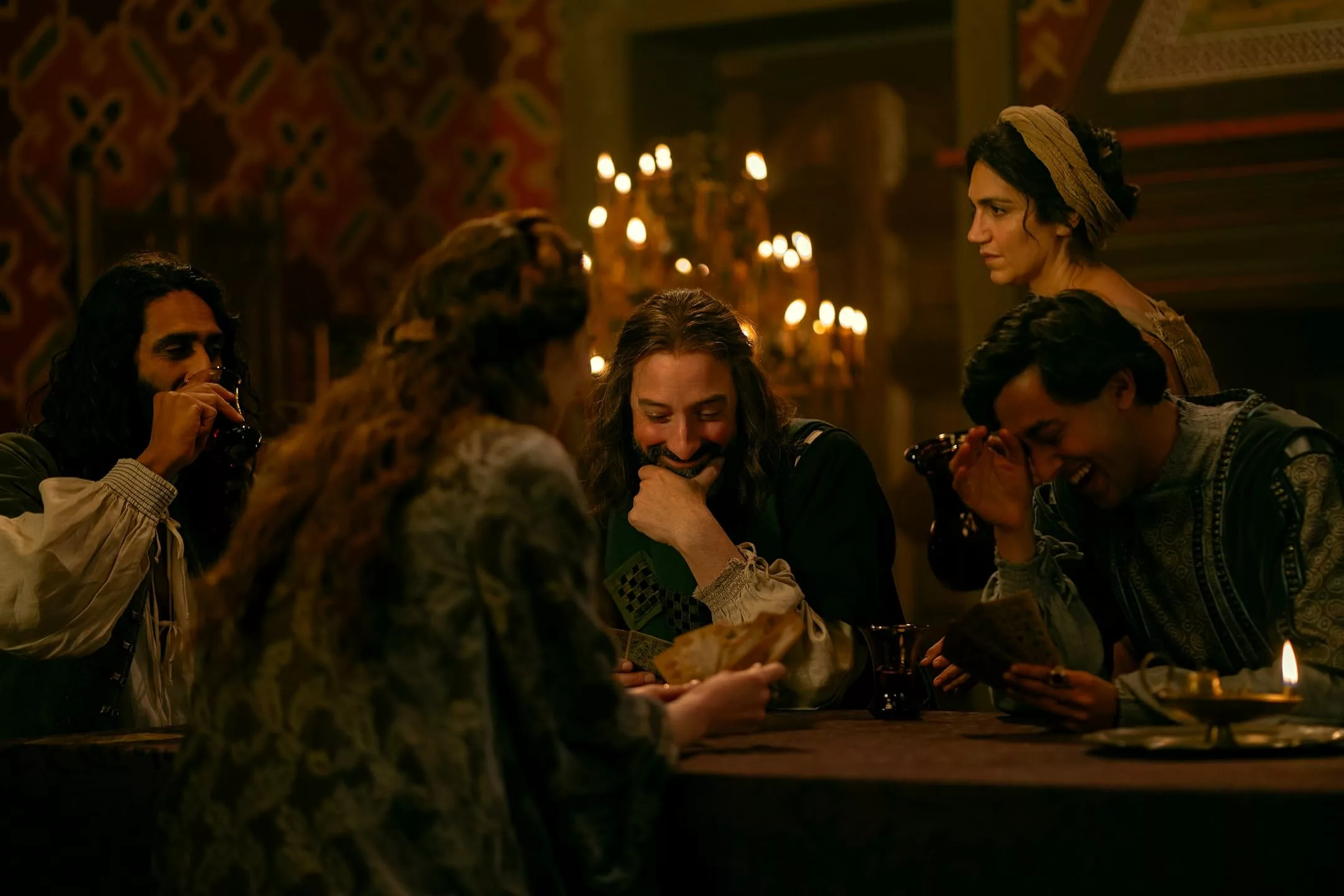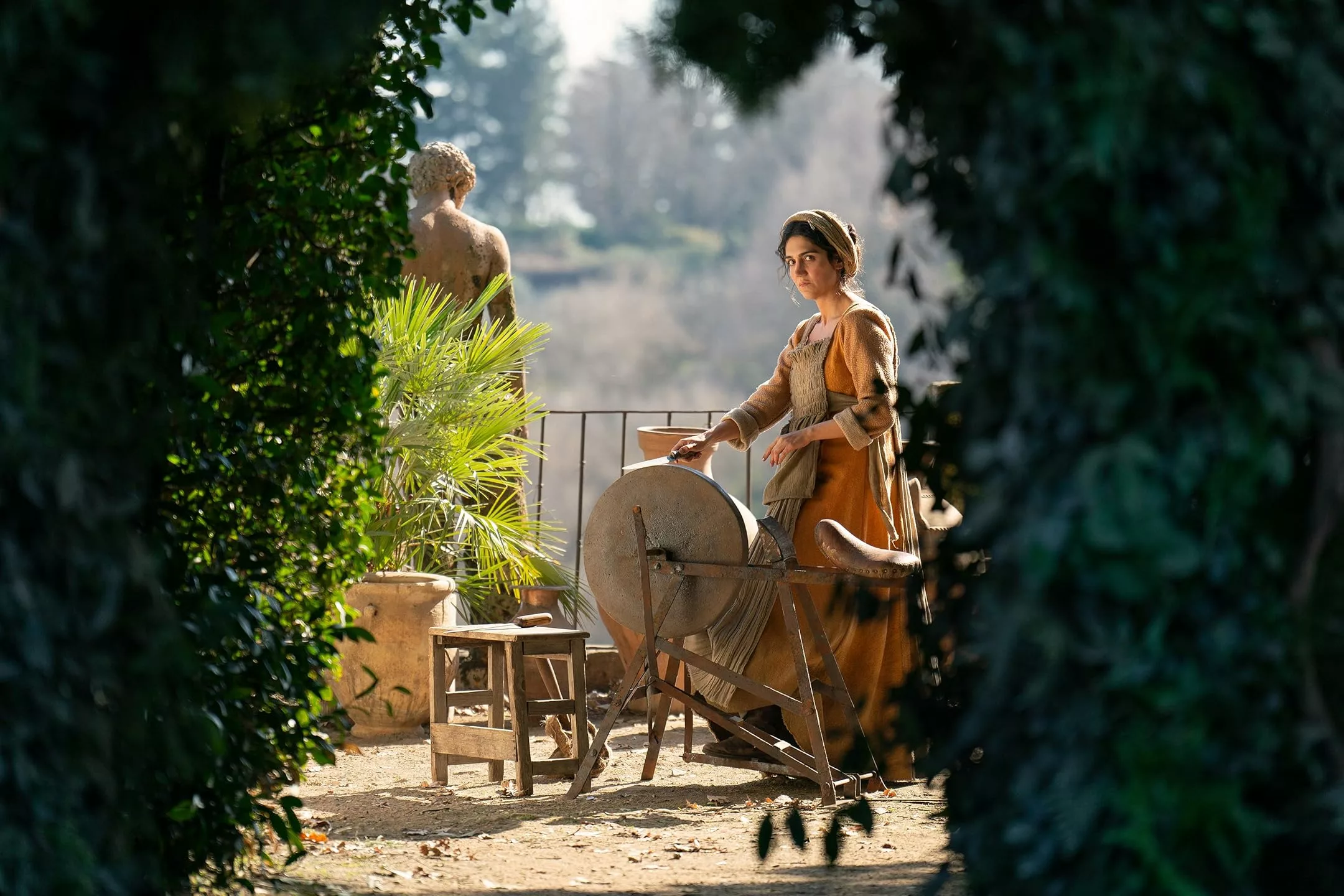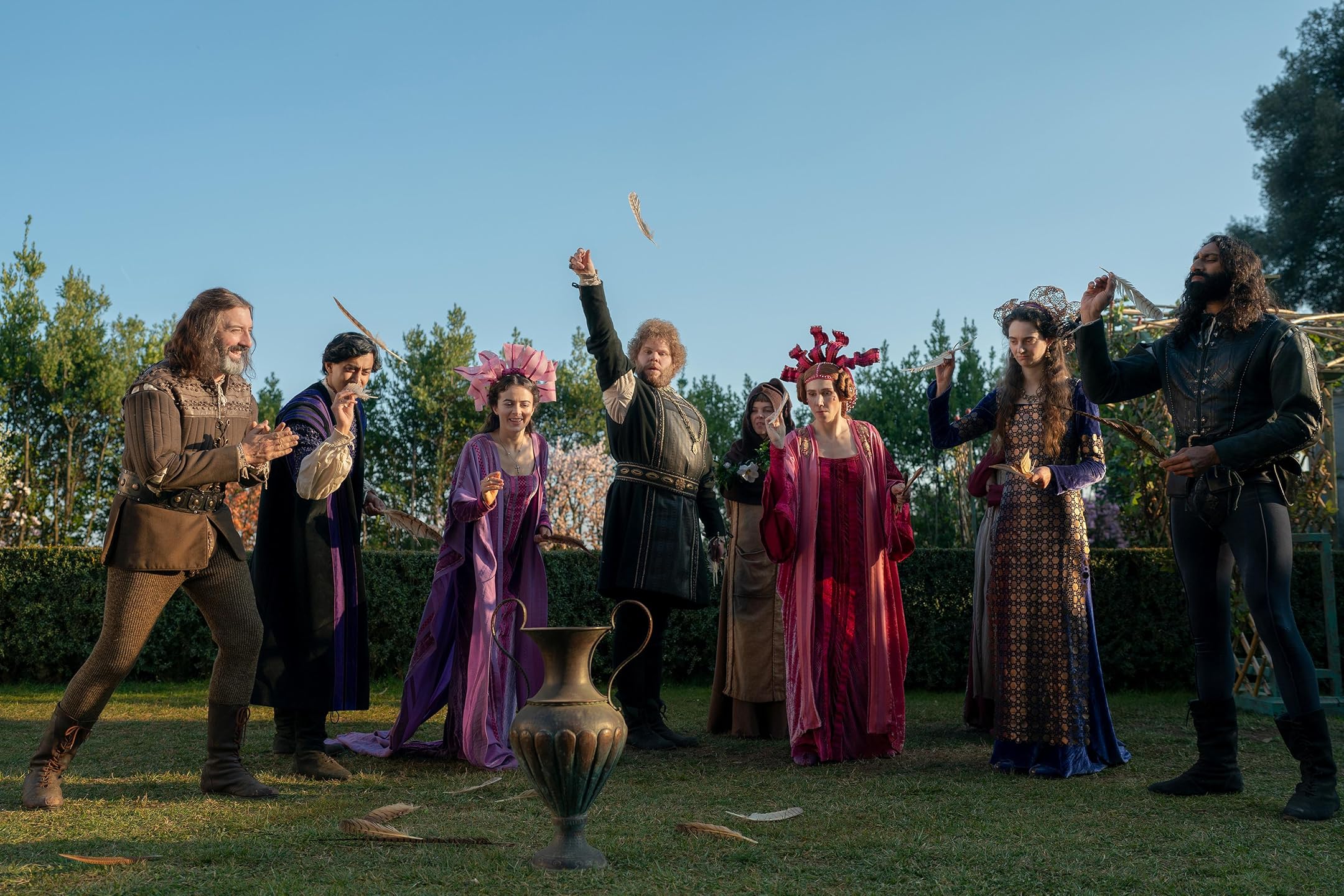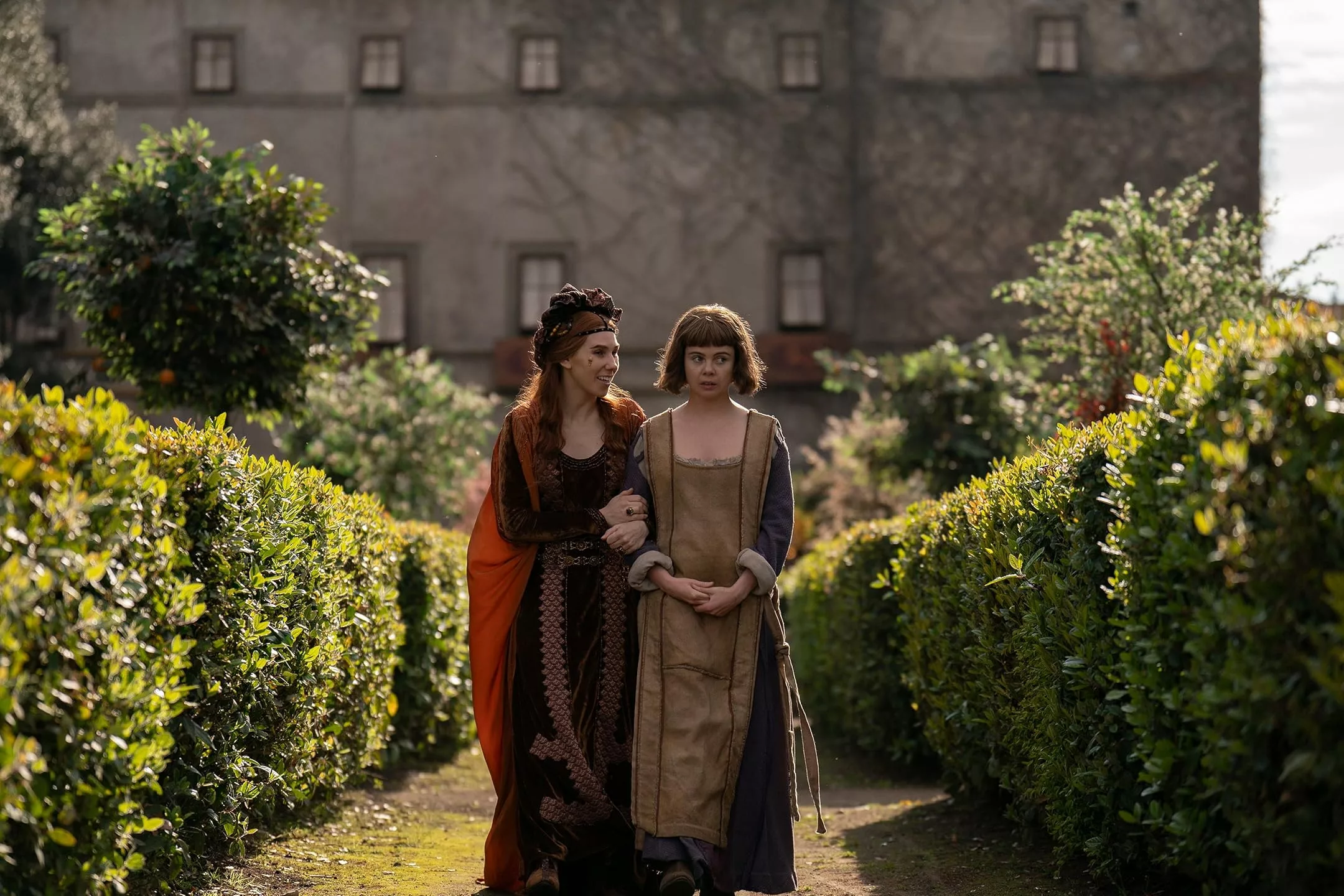As the Black Death swept across medieval Italy, a group of nobles sought refuge from the devastation. In 1348, wealthy landowner Leonardo extended an invitation to fellow aristocrats hoping to outrun the plague—come shelter at my estate in the countryside, far from the disease-ridden city streets.
Thus a disparate dozen found themselves within the high walls of Leonardo’s luxurious villa, overlooking rolling vineyards. While cities burned with sickness, this remote haven promised respite.
Yet escaping the plague did not guarantee escaping drama. Trapped together for who knew how long personalities and pasts collided. Leonardo’s intended, the anxious Pampinea, arrived desperate to wed before her youth faded. Snobbish Filomena dragged along her faithful servant Licisca, who secretly dreamed of more. The devout Neifile and ambitious Panfilo brought their own tensions.
Even the servants harbored secrets, like Stratilia protecting the home’s true fate. With death knocking outside, would secrets stay buried? Passions and schemes similarly threatened to boil over within the villa’s ornate halls. For this group of strangers, escaping danger outside proved the easy part. Avoiding danger amongst themselves would test them all.
A Motley Crew Escape the Plague
Sheltered within the villa’s stately walls, a disparate group seeks refuge from devastation outside. Each guest to Leonardo’s country estate brings their own drama, from the self-absorbed Pampinea obsessively awaiting her betrothed to the pious yet lustful Neifile and her companion Panfilo seemingly mismatched in body and soul. But for all their differences, the corners into which they are thrown together ensure sparks will fly.
Zosia Mamet portrays Pampinea’s hysterics with a comedic flair reminiscent of acclaimed sitcoms like Flight of the Conchords or Curb Your Enthusiasm. Never far from her side, Saoirse-Monica Jackson imbues loyal servant Misia with equal parts exasperation and devotion in her interactions with the petulant noblewoman.
As Neifile, Lou Gala injects her character’s religious piety with a smoldering sensuality barely contained. Opposite her, Karan Gill brings subtlety to Panfilo’s hidden desires at odds with social expectations. Both actors convey emotional complexities that deepen as secrets are revealed.
Among the guests, perhaps none stand out so much as Licisca, brought to vibrant life by Tanya Reynolds. Her comedic talents shine as the servant swept along in unexpected adventures after assuming her missing mistress’ identity. Reynolds commands every scene with a wit and fierce charm, increasingly becoming her signature.
With past experience in hyperbolic roles, Douggie McMeekin perfectly embodies Tindaro’s whiny, self-absorbed nature, and Amar Chadha-Patel brings an irresistible charm to his physician Dioneo at the center of growing intrigue.
As the diligent servants keeping order, Tony Hale and Leila Farzad imbue Sirisco and Stratilia with an exhausted pragmatism, deftly balancing the growing chaos around them.
Together, this ensemble breathes life into a true “motley crew” shut inside together. With escape from death outside, perhaps the real drama lies in escaping each other—or finding connections—within the villa’s walls.
Laughing in the Face of Death
The Decameron takes an unabashedly irreverent approach to its subject matter. While the plague ravaged Europe, this show finds comedy in the darkest of times. Through farcical situations and cartoonish performances, it draws absurd humor from even the most grim of realities.
This unapologetic silliness puts one in mind of classics like Blackadder or Monty Python—works not afraid to push boundaries or mock the sacred cows of their eras. Like those shows, The Decameron sees no subject-off limits for a well-timed jape. It parodies everything from religion to aristocratic decadence with gleeful abandon.
Yet for all the crassness of its jokes, the production values are first-rate. Cinematography transports viewers to 14th-century Tuscany in all its rustic beauty. Lavish costuming and detailed sets immerse one in this world, making the absurdity all the more fun to watch unfold in such opulent surroundings.
Even in the darkest of moments, when death comes knocking, the show maintains its lighthearted spirit. Rather than wallow in doom or preach messages about humanity’s fragility, it prefers to find humor in people’s quirks and foibles, reminding us that laughter too can be a balm in troubled times.
Through this balance of irreverence and artistry, The Decameron proves an infectiously fun watch, even when poking fun at infection itself. Its anything-goes comedy has you laughing in the face of the Grim Reaper, if only to forget your own mortality for a while.
Welcome to Pandemonium
Stepping into the villa, you’d be forgiven for thinking this group had come together for a relaxing getaway. But tensions are simmering just below the surface from day one.
We’ve got Pampinea desperate to wed before turning 29, while her would-be husband Leonardo is mysteriously absent. Throw Licisca into the mix, pretending to be her dead mistress Filomena, and Sirisico’s attempts to hide Leonardo’s demise, and it’s easy to see troubles ahead.
Things come to a head quickly. A chance encounter fuels Neifile’s lust for Dioneo, though he’s set his sights on the captivating Licisca. Panfilo pines for his doctor too—complicating matters further when the real Filomena suddenly reappears!
If the secrets and passion weren’t enough, plague still rages outside. Bandits attack, stoking everyone’s fears. In the chaos, passions further ignite as Licisca confronts her deceit and Misia grieves her lost love alone.
Safety in numbers offers little solace as tensions mount. Pampinea unleashes her hysteria on hapless Misia while the villa’s true circumstances slowly emerge. In grander games, our characters must choose their allies wisely.
As the drama builds soap opera style, no one’s motives are purely pure. Pampinea plots to rid herself of rival Licisca as Dioneo’s affection grows elsewhere. Even kind Sirisco faces difficult choices to protect his own.
Through it all the pestilence looms, a reminder however precarious this gathering. With deception of the villa’s currency, who can say which bonds or borders will outlast the season’s end? Our misfit band of survivors has only each other to rely on against the madness without—and within.
Darkly Funny
The Decameron sets out to satirize some timely themes of class, privilege, and sexuality through its story of elites retreating from plague. Creator Kathleen Jordan drew inspiration from celebrity pandemic complaints, hoping to hold a funhouse mirror to social divides. However, the show doesn’t fully develop these ideas.
On the surface, it skewers the perks and pretensions of nobility through characters like Pampinea and Tindaro. Pampinea acts the pampered drama queen, while Tindaro plays the hypochondriac man-child; both are laughably out of touch. Their clueless antics aim to critique those that feel insulated from life’s harsher realities by wealth and status.
We also see divisions between the lords and their servants, like deferential Misia and cunning Liscia pursuing what advantages they can. Their interactions expose lingering power imbalances that endure even amid equalizing catastrophe. A sharp satire seems aimed at hierarchies society upholds.
Further, the show pokes fun through anachronistic approaches to sexuality. Neifile’s piety battles her desires in amusing fashion, while sly Dioneo appeals across class lines. Their hijinks perhaps mean to gently mock enduring puritanisms and their stifling of natural urges.
Yet for all the solid setup, these subtexts feel only lightly sketched rather than profoundly explored. The hijinks pitch proves so high as to drown out nuanced critiques. While laughter arises, deeper messages on society’s fault lines don’t emerge as impactfully as they could.
So while Jordan takes some cracks depicting the absurd in any era, The Decameron doesn’t fully channel our own unprecedented times into its visceral farce. Its vision of humanity proves darkly funny but not as sharply insightful as its provocative origins promise. With refinement, its social satire could prove far more sublime.
Zany Antics and Satire
The Decameron cleverly uses witty dialogue and ribald humor to skewer the haughty attitudes of its noble characters. The bawdy jokes and outrageous situations allow creator Kathleen Jordan to satirize class divides through farcical scenes. Some performances truly thrive in this comic spirit.
Tanya Reynolds as the cunning servant Licisca steals many laughs with her trickster schemes and coy flirtations. Playing both cunning opportunist and lovelorn maiden, she navigates social barriers through guile rather than status. Elsewhere, Douggie McMeekin aptly portrays the pretentious Tindaro as a milquetoast man-child, eliciting mirth through his childish hypochondria.
Tony Hale also shines as the exasperated steward Sirisco, constantly put upon by his impractical charges yet fighting to hold together their world with pragmatism. His straight-laced sensibilities provide amusing counterpoint to the looniness surrounding him.
Satire likewise stems from the pretensions of characters like fussy noblewoman Pampinea, embodied enthusiastically by Zosia Mamet. Her histrionic behavior mocks those aloof from commoners’ plights.
Yet as the season progresses, some elements become repetitive. Flimsy storylines limp along merely to fuel prolonged hijinks, and characters like Pampinea risk growing tiresome with their one-note antics. Furthermore, such farcical zaniness forms the show’s sole approach, leaving deeper themes underdeveloped. While laughs initially flow, surplus airtime tests viewers’ endurance for escalating absurdities. With refinement, The Decameron’s comedic devices could unleash satire even more potent.
Farcical Fun with Missed Opportunity
The Decameron provides plenty of humorous hijinks to keep viewers engaged throughout its run. The lively cast generates laughs through outrageous antics and bawdy dialogue that send up medieval social norms. Creator Kathleen Jordan showcases her talent for quirky characters and brisk pacing in the set-up and execution of comedic plotlines.
However, the series struggles to sustain its high standard as episodes progress. While early laughs flow freely, later installments rely on extended scenarios and repetitive gags. This dilutes the fun as viewers adjust to the ensemble’s eccentricities. Storylines also spin wheels, prioritizing drawn-out punchlines over meaningful character arcs or exploration of potential themes.
Jordan establishes an entertaining premise to satirize class structures through the pandemic prism. But opportunities arise that go unfulfilled to impart deeper ruminations on human resilience, social hierarchy, or leaders losing touch. The Decameron maintains a lighthearted, farcical tone when diving into weightier subject matter, which could have boosted the comedy’s impact and rewatchability.
Ultimately, this historical romp delivers frequent giggles and sumptuous production value. However, it falls back on lowbrow antics rather than reaching its high-concept potential. While an enjoyable romp, The Decameron represents missed chances for sharper social commentary and more nuanced narrative in its lavish setting. With refinement, its biting wit and talented cast could have shone even brighter.
The Review
The Decameron
The Decameron provides lively comedy and strong performances that entertain in early episodes, satirizing medieval social dynamics through outrageous farcical scenarios. However, it fails to sustain this quality as installments progress, losing steam as gags repeat and opportunities arising from its insightful premise go unrealized. While an initially funny romp, the series lacks narrative focus and depth to match the wit of its capable ensemble.
PROS
- Strong comedic performances in early episodes
- Lavish production design and costumes
- Witty satire of medieval social dynamics
CONS
- Declines in quality as episodes progress
- Overreliance on repetitive gags
- Fails to develop characters and themes fully






















































Discussion about this post